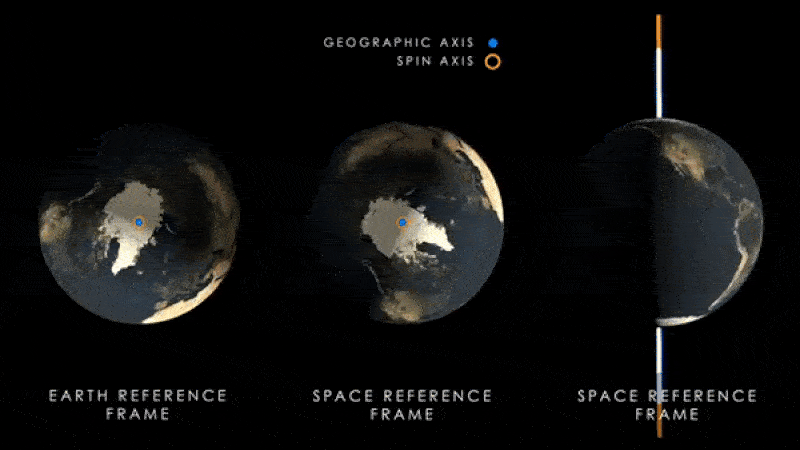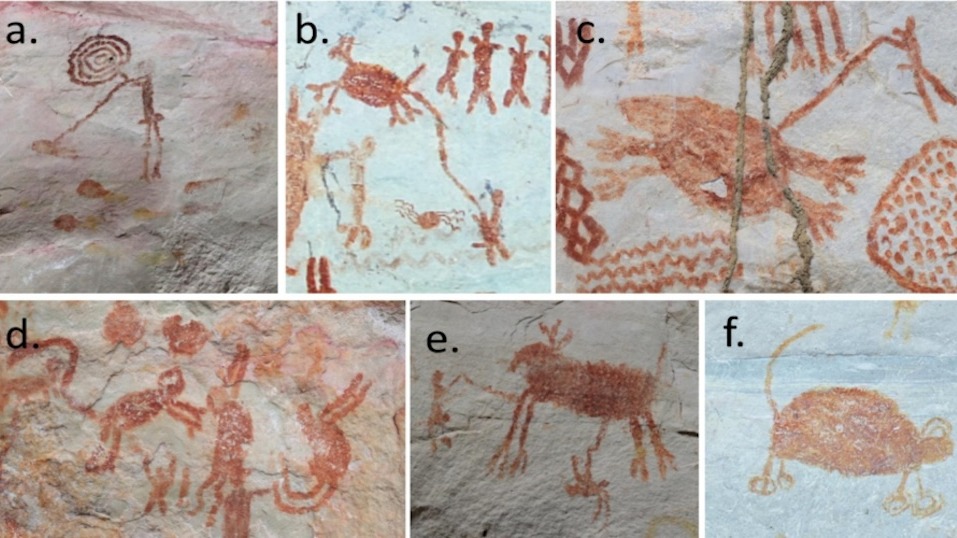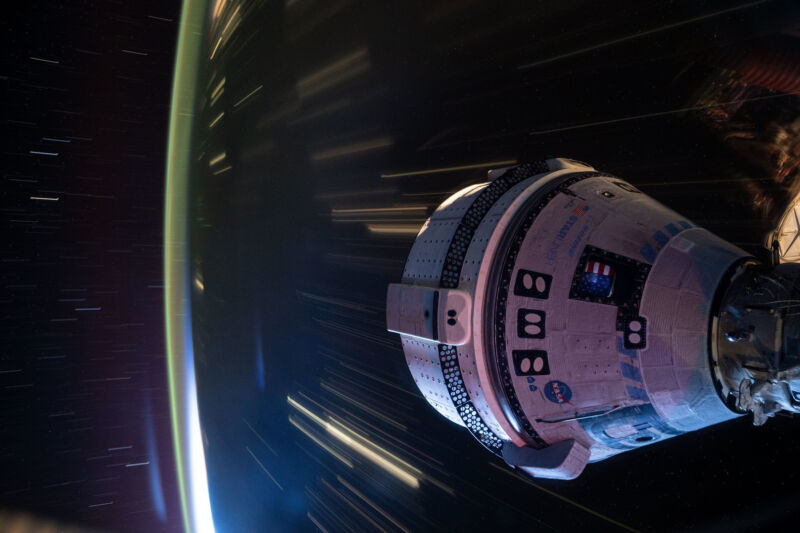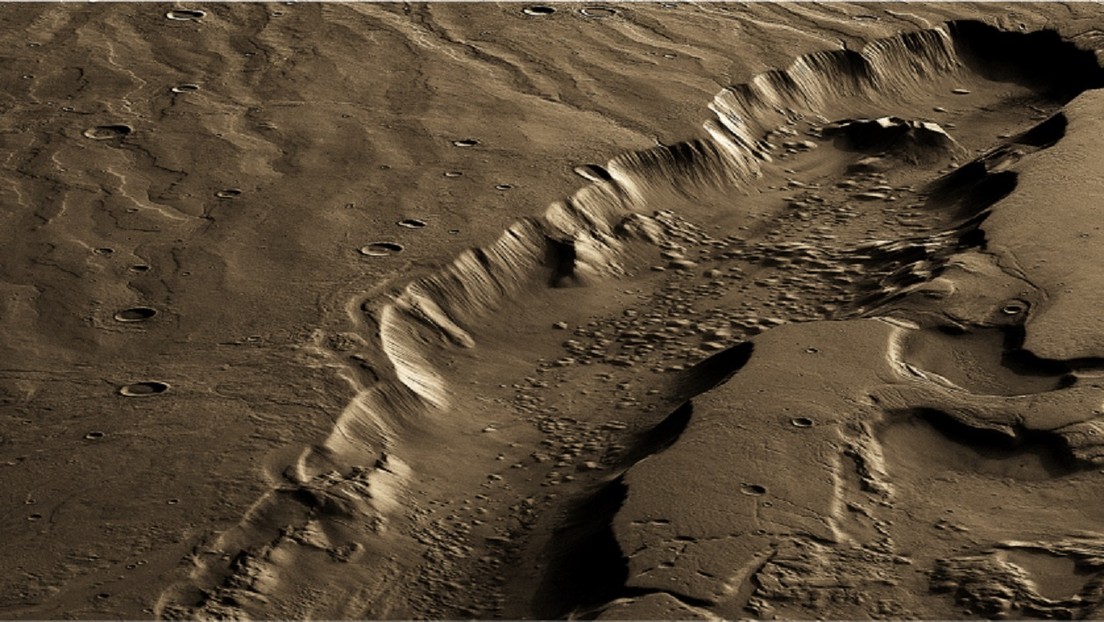La duración de los días terrestres y la orientación de nuestro planeta están desequilibradas debido a cambios provocados por el hombre. cambio climático cambia continuamente la rotación de la Tierra, sugiere un nuevo estudio.
Al principio, estos cambios nos resultarán imperceptibles, pero podrían tener graves repercusiones, como obligarnos a introducir segundos intercalares negativos, interferir con los viajes espaciales y alterar el núcleo interno de nuestro planeta, advierten los investigadores.
Un día en la Tierra dura aproximadamente 86.400 segundos. Pero el tiempo exacto que tarda nuestro planeta en completar una sola rotación puede variar en fracciones de milisegundos cada año debido a una serie de factores, como los movimientos de las placas tectónicas. cambios en la rotación del núcleo interno y la atracción gravitacional de La luna.
Sin embargo, el cambio climático causado por el hombre es otro factor que puede alterar la duración de nuestros días, y los científicos apenas están comenzando a darse cuenta de cuánto afectará esto a la rotación de nuestro planeta en los próximos años.
En las últimas décadas, el ritmo de pérdida de hielo de las regiones polares de la Tierra, particularmente Groenlandia y antárticoaumentó rápidamente debido a el calentamiento climáticolo que hace que el nivel del mar aumente. La mayor parte de esta agua adicional se acumula cerca del ecuador, lo que hace que nuestro planeta se abulte ligeramente en el centro. Esto ralentiza la rotación del planeta porque se distribuye más peso más lejos del centro del planeta, de la misma manera que los patinadores artísticos reducen la velocidad alejando los brazos del cuerpo.
En el nuevo estudio, publicado el 15 de julio en la revista PNASLos investigadores utilizaron un método avanzado. inteligencia artificial programa que combina datos del mundo real con las leyes de la física para predecir cómo cambiará la rotación del planeta con el tiempo.
Relacionado: Todo lo que necesitas saber sobre el planeta Tierra
Los resultados confirman una estudio similar publicado en marzo, que sugería que los días en la Tierra se alargarían en el futuro. Sin embargo, el nuevo programa proporcionó estimaciones mucho más precisas de cómo los días se alargarán con el tiempo.
El mismo equipo de investigación detrás del nuevo artículo también publicó otro estudio, publicado el 12 de julio en la revista Geociencias naturalesque demostró que el aumento de la cantidad de agua cerca del ecuador desplaza el eje de rotación de la Tierra. Esto hace que los polos magnéticos se alejen más y más del eje cada año.
Los científicos ya han descubierto que este efecto tiene Esto probablemente ha estado sucediendo durante al menos las últimas tres décadas.. Sin embargo, el nuevo estudio sugiere que el eje se alejará aún más de su posición actual de lo que predijeron estudios anteriores.
“Los humanos tenemos un impacto mayor en nuestro planeta del que creemos. » Benedikt Soyaun geodesista de ETH Zurich en Suiza que fue coautor de los dos nuevos estudios, dijo en un declaración“Y esto, naturalmente, nos otorga una gran responsabilidad para el futuro de nuestro planeta. »
Gira más lentamente
Días de la Tierra siempre han variado en longitudHace aproximadamente mil millones de años, nuestro planeta probablemente tomó sólo 19 horas para completar una sola rotaciónantes de disminuir la velocidad hacia las 24 horas que vivimos hoy.
También evoluciona en escalas de tiempo más cortas. Por ejemplo, en 2020, la Tierra estaba girando más rápido que en cualquier otro momento desde que comenzaron los registros en 1960. En 2021, la rotación del planeta comenzó a disminuir de nuevo a pesar de que experimentamos el el día más corto jamás registrado en junio de 2022.
Pero, en general, la rotación de la Tierra se ha ido desacelerando durante milenios, principalmente debido a un proceso conocido como fricción de marea lunar, en el que el efecto gravitacional de la Luna sobre nuestros océanos aleja el agua de los polos. Actualmente, este efecto alarga nuestros días unos 2,3 milisegundos por siglo.
Nuevos estudios muestran que el cambio climático está alargando nuestros días en aproximadamente 1,3 milisegundos por siglo. Sin embargo, basándose en los modelos actuales de temperatura global, los investigadores predicen que esta cifra podría aumentar a 2,6 milisegundos por siglo a finales del siglo XXI, lo que haría del cambio climático la influencia más significativa en la rotación de nuestro planeta.
Impactos potenciales
Uno de los efectos más probables de los días más largos sería la necesidad de introducir segundos intercalares negativos, donde ocasionalmente perderíamos un segundo de algunos días futuros para tener en cuenta el alargamiento de los días, similar a ¿Cómo funcionan los años bisiestos?.
El estudio de marzo sugiere que es posible que esto deba comenzar a suceder ya en 2029, principalmente para tener en cuenta el alargamiento de los días durante los últimos milenios.
En el pasado, los científicos han sugerido que esta introducción podría alterar sincronización de computadora y teléfono inteligente.Sin embargo, no todo el mundo está convencido de que esto vaya a ser un problema importante.
Los investigadores de los nuevos estudios también señalaron que los cambios futuros podrían afectar los viajes espaciales.
«Aunque la rotación de la Tierra cambia lentamente, este efecto debe tenerse en cuenta al navegar por el espacio, por ejemplo al enviar una sonda espacial a aterrizar en otro planeta», afirmó Soja. Por eso es importante seguir de cerca estos cambios, añadió.
El equipo también advirtió que los cambios en el eje de rotación de la Tierra podrían alterar la rotación del núcleo interno de la Tierra, lo que podría aumentar aún más el ritmo al que se alargan los días. Sin embargo, esta posible interacción aún se desconoce en gran medida.


















